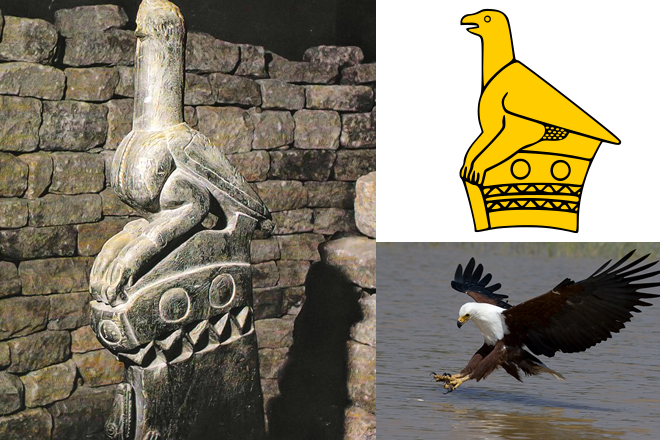By Elizabeth D.T. Taderera
The national emblem that appears on the national flag, the coats of arms of both Zimbabwe and Rhodesia, as well on their bank notes and coins. It represents the African fish eagle and the design is derived from a number of soapstone carvings found in the ruins of the ancient city of Great Zimbabwe.
The soapstone bird sculpture is about 40cm tall and stands on columns more than 90cm tall. They were originally installed on walls and monoliths within the city. They are unique and nothing like them has been discovered elsewhere. One theory is that each bird was erected to represent a new king. A more likely theory is that they represented the totemic animals of the Shona: the bateleur eagle (chapungu) which was said to be a messenger from Mwari and the ancestors, or the fish eagle (hungwe) the presumed original totem of the Shona people.
It is recorded that there were eight birds (six large and two small ones). There were probably more as there were several additional pedestals where the tops had been broken off. In 1889 European hunter Willi Posselt travelled to Great Zimbabwe and took a bird, selling it to Cecil John Rhodes who mounted it in the library of his Cape Town house. More birds were taken from the Great Zimbabwe site in 1906. A pedestal another was sold off to the Ethnological Museum in Berlin in 1907. After Zimbabwe got its independence the South African government returned four of the sculptures in exchange for a world-renowned collection of hymenoptera (bees, wasps and ants) hosed in Harare. The fifth bird remains at Groote Schuur. In 2003 the German museum returned its portion of the bird pedestal. The birds are now housed in a small museum on the Great Zimbabwe site.

























